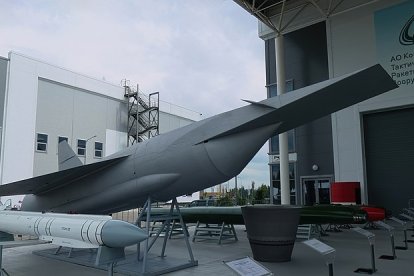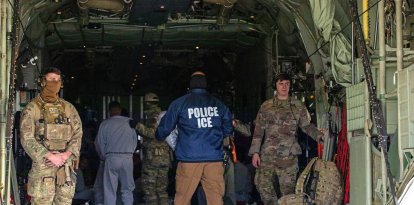Hypersonic missiles are essential: Russia and China have, the United States does not
These weapons can travel up to twenty times faster than the speed of sound and are capable of evading most conventional defense mechanisms.

Wikimedia Commons
The geopolitical chessboard of the twenty-first century promises to be crossed by how advanced the weapons of modern armies are. From artificial intelligence to biotechnology, countries are constantly trying to stay ahead of new technologies, something the United States is doing but with a bit of an uphill battle with the hypersonic missile. These weapons will be fundamental to tip the balance of war in the coming years. While China and Russia already have their versions available, the Pentagon has only failed tests and wasted investments.
According to a recent article in The Wall Street Journal, the concern in the defense sector is this: The United States has not deployed any real hypersonic missiles, while Beijing and Moscow already have them embellishing their arsenal.
"In a battle in the South China Sea, Beijing could use hypersonic missiles to more than double its reach, leaving U.S. ships in the region nearly defenseless, and even strike Guam, home to thousands of U.S. troops and key military installations. Even the most advanced U.S. warship could be rendered defenseless by a hypersonic attack." Sharon Weinberger.
Despite heavy American investment in such weapons, all advances have not ended well, either because of failed flight tests, inadequate infrastructure, or the lack of a clear roadmap in deployment. In March, the Air Force canceled its most advanced hypersonic program, developed by Lockheed Martin.
After several unsuccessful tests, Frank Kendall, secretary of the Air Force, told lawmakers they would focus on Raytheon's hypersonic cruise missile, the prototype of which could be ready by 2027.
What is a hypersonic missile?
According to the Carnegie Endowment for International Peace, it can travel five times faster than sound, although some can do it twenty times faster. In other words, you can get from New York to Beijing in an hour and forty minutes. What sets hypersonic missiles apart from other weapons is their ability to adjust their course during flight. In the words of James Acton, deputy director of the organization's nuclear program, what makes them special is "the combination of speed and maneuverability over long distances."
Unlike their colleagues, guided ballistic missiles and glide missiles, hypersonic missiles do not need to leave the atmosphere when launched, allowing them to have a much more direct trajectory to their target.
Finally, they can evade most conventional defenses and carry conventional explosives or nuclear warheads. The comparison is clear, a ballistic missile also travels at hypersonic speeds, but, by maintaining a trajectory, it is easier to intercept it with some defense mechanism.
"We basically trained the world in hypersonics"
So said Richard Hallion, an aerospace analyst. The expert refers to the fact that the United States began to study hypersonic weapons long before China or Russia and that in the end it was the latter two countries that first came to develop the missiles.
How did this happen? In part because of the kindness of Americans in sharing their scientific findings with the world. "Beijing often used American research on hypersonics—published openly in scientific journals—that the U.S. government funded for decades. Among other things, American researchers published on computational fluid dynamics, which helps model hypersonic flight, only to see China develop codes that clearly used those developed in the U.S.", the article explained.
The current situation of hypersonic weapons in the United States
Despite the lack of infrastructure needed to conduct the tests, the Pentagon is funding about half a dozen different hypersonic weapons, though the actual number remains secret. But some, like William Roper, the Air Force's former chief of procurement, aren't overconfident about the investigations.
"There wasn’t a strategy during my time at the Pentagon. And from what I can see from the outside, there doesn’t appear to be one now."
RECOMMENDATION





















